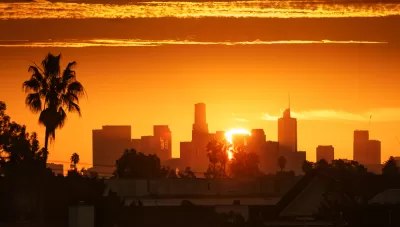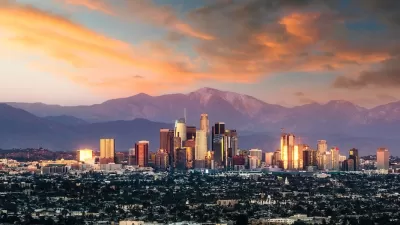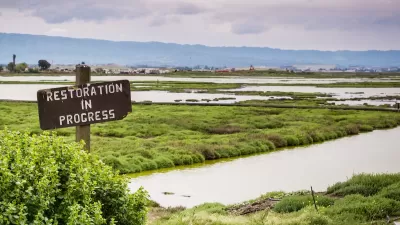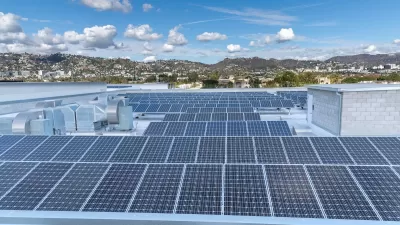The revised plan reflects the county's commitment to fighting climate change and identifies strategies, measures, and actions to mitigate greenhouse gas emissions from community activities and some municipal operations.

Climate change is a real, urgent, and significant threat, with impacts being felt today in Los Angeles County, across the U.S., and around the world. Climate change has already adversely impacted L.A. County residents—especially the most vulnerable—and can harm the health, safety, and welfare of future generations. On September 4, 2018, the County Board of Supervisors adopted a motion supporting the 2016 Paris Climate Agreement and added the County to the We Are Still In Declaration. By this action, the County is committed to adapting its programs and services to reduce unincorporated Los Angeles County's greenhouse gas (GHG) emissions and help limit global temperature increases.
This 2045 Los Angeles County Climate Action Plan (2045 CAP) is the County’s strategy to meet the goals of the Paris Agreement and achieve carbon neutrality for the unincorporated areas of Los Angeles County. The 2045 CAP builds on previous climate action work from the Unincorporated Los Angeles County Community Climate Action Plan 2020 (2020 CCAP), adopted in October 2015 as a subcomponent of the Air Quality Element of the Los Angeles County General Plan 2035. The 2045 CAP identifies strategies, measures, and actions to mitigate GHG emissions from community activities, which may include some municipal operations.
The public can provide input by reviewing and commenting on the Revised Draft 2045 CAP and Recirculated Draft Environmental Impact Report (DEIR). The public review period began on March 16, 2023 and will end on May 15, 2023. Comments should be sent to: [email protected].
FULL STORY: Climate Action in LA County

Trump Administration Could Effectively End Housing Voucher Program
Federal officials are eyeing major cuts to the Section 8 program that helps millions of low-income households pay rent.

Planetizen Federal Action Tracker
A weekly monitor of how Trump’s orders and actions are impacting planners and planning in America.

Ken Jennings Launches Transit Web Series
The Jeopardy champ wants you to ride public transit.

Congress Moves to End Reconnecting Communities and Related Grants
The House Transportation and Infrastructure Committee moved to rescind funding for the Neighborhood Equity and Access program, which funds highway removals, freeway caps, transit projects, pedestrian infrastructure, and more.

From Throughway to Public Space: Taking Back the American Street
How the Covid-19 pandemic taught us new ways to reclaim city streets from cars.

Opinion: Transit Agencies Must View Service Cuts as Last Resort
Reducing service could cripple transit systems by pushing more riders to consider car ownership, making future recovery even less certain.
Urban Design for Planners 1: Software Tools
This six-course series explores essential urban design concepts using open source software and equips planners with the tools they need to participate fully in the urban design process.
Planning for Universal Design
Learn the tools for implementing Universal Design in planning regulations.
Heyer Gruel & Associates PA
Ada County Highway District
Institute for Housing and Urban Development Studies (IHS)
City of Grandview
Harvard GSD Executive Education
Toledo-Lucas County Plan Commissions
Salt Lake City
NYU Wagner Graduate School of Public Service





























